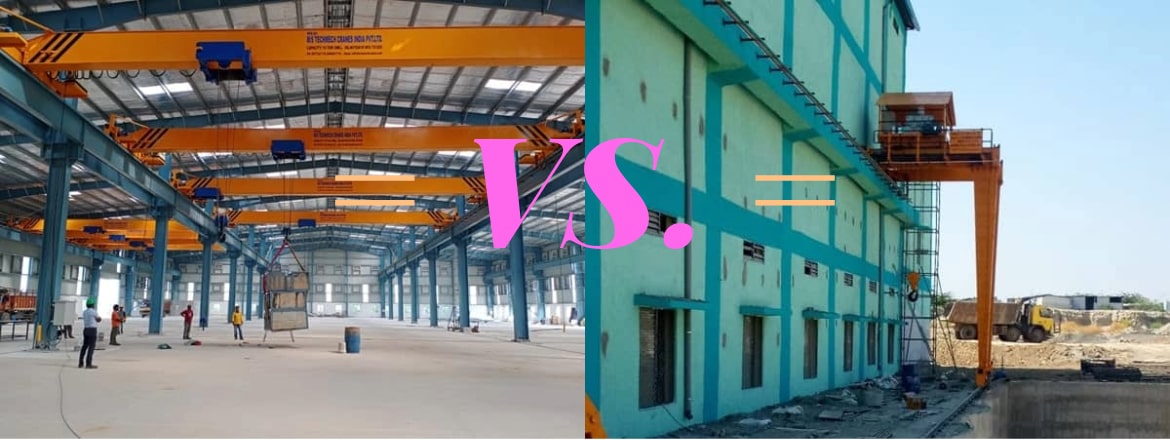- Sy.No.819/Part, Kistapur Road, Medchal, Hyderabad.
- 9440247110
info@techmechcranes.com



Selecting the right Electric Overhead Traveling (EOT) crane ensures operational efficiency, safety, and cost-effectiveness in material handling processes. Single and double-girder EOT cranes are the two main types of EOT cranes, and each is suited for specific applications. Here's a concise guide to help you make the right choice.
Single Girder EOT Crane: Best suited for small to medium size loads, normally not more than twenty-five tons. These cranes are well suited to applications such as assembly lines, maintenance work, and in small to medium sized warehouses.
Double Girder EOT Crane: Designed specifically to suit high utilization profiles, double girder cranes can transport loads of up to 25+ tons, with the possibilities of reaching 250+ tons. These cranes are appropriate for steel industries, cement Industries, power plants, ship builders and industries dealing with heavy machineries.
Single Girder: Suitable for shorter spans which go up to 40 metres and limited lifting going up to 30 metres. The hoist is mounted beneath the girder, slightly reducing the lifting height.
Double Girder: Designed for wider spans going well over 40 metres and applications requiring greater lifting heights. The crab assembly hoist is fixed across the girders and this enables the enhancement of the vertical lifting capability.
Single Girder: Ideal for light-duty environments, such as workshops, small manufacturing units, and standard warehouses.
Double Girder: Designed for demanding use and unfavorable conditions. They can also include supplementary hoisting gear, corridors, and floors, which makes them appropriate for applications such as with power stations and large-scale warehouses.
Single Girder: More economical in terms of initial investment, material cost, and maintenance. It is a cost-effective option for lighter and less frequent operations.
Double Girder: While they may initially cost something more compared to other overhead cranes of similar size, double girder cranes will prove to be more durable and efficient for use under these circumstances. They may cost more initially to install than their counterparts because they can carry more load and last longer.
Single Girder: Option of choice is small for this variant and primarily geared up for basic needs.
Double Girder: Highly customizable, and comes with added functionalities like auxiliary hoists, walks, service platforms, and high adaptability to complex operations.
However, if you feel that in the future there may be more production demands or loading capabilities needed, you are better off with the double girder crane. Thus, the business model brings the opportunities of scalability and the flexibility of future development.
Single and double-girder EOT cranes, though used as different products, must conform to specific safety codes depending on the geographical location or the sector and its particular requirements. Self-constructed cranes such as the double girder cranes are, however, very useful mainly when it comes to more intensive use of the crane since they offer more safety measures.
When choosing between single and double-girder EOT cranes, several factors should be taken into consideration such as load bearing, span, maximum lifting height, cost and expected future prospects. Single girder cranes are perfect for light, inexpensive work environments. The above options show why double girder cranes are ideal for applications related to heavy duty and high capacity use. It is advisable to speak to someone experienced in the field or a manufacturer of cranes to assess your needs in order to be served best by your equipment.
TechMech Cranes have a strong tradition of being designed and built to provide reliable material handling solutions for our valued domestic and international customers.